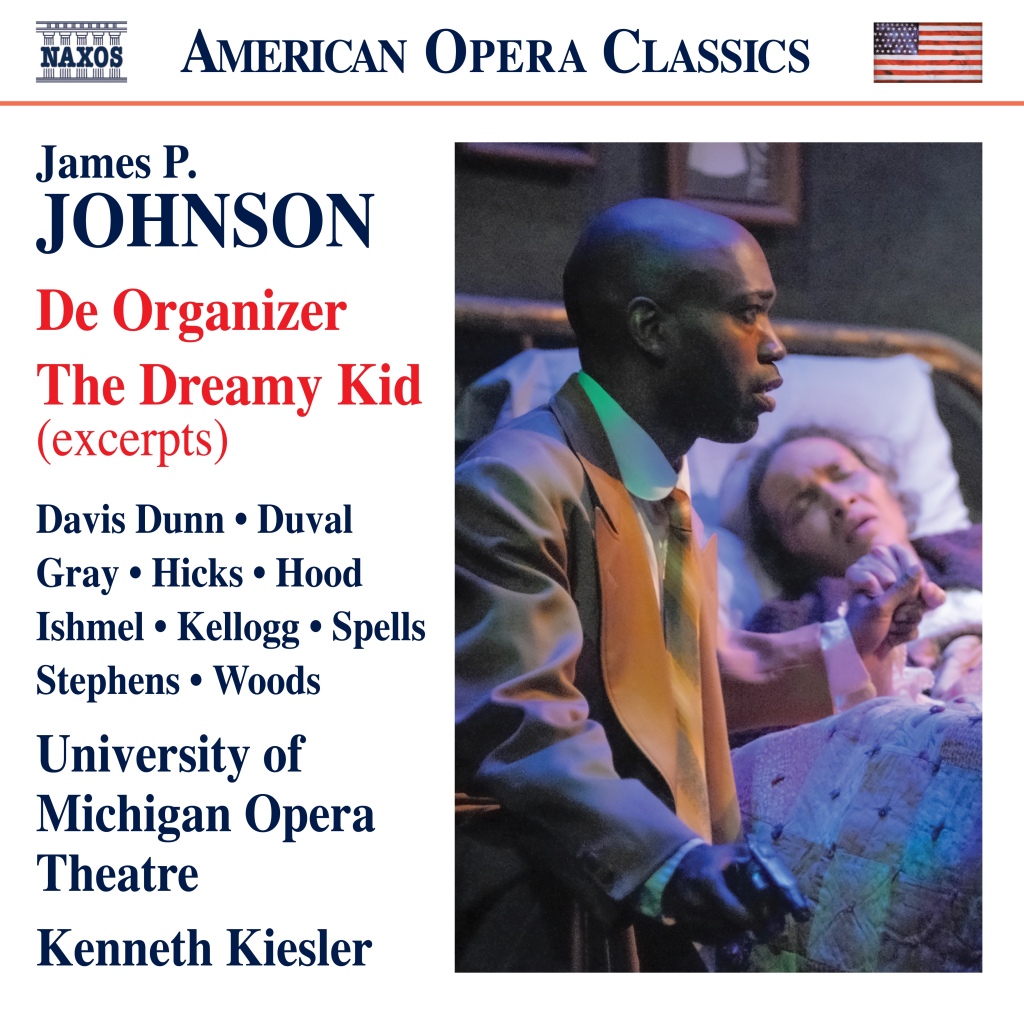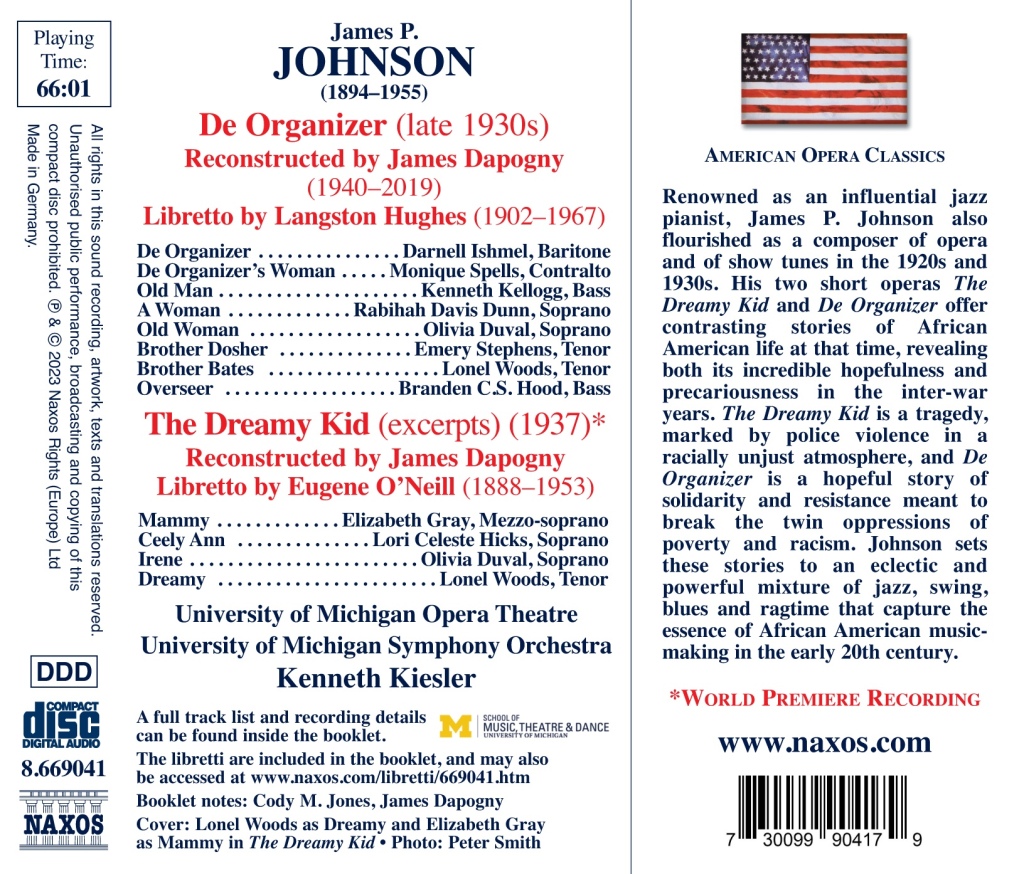
Common readers of this weblog are surely conscious about my “outsider” pursuits. Whether or not suppressed via the fascist regime (as in London Information’ “Entartete Musik” collection and Chandos’ “ARC” ensemble recordings), or just eclipsed via extra “impressive” initiatives (through which I imply there “produce a display” like Stravinsky’s Ceremony of Spring)) however, as the instance of Cedille Information illustrates: “Sooner than the Typhoon“, song can also be oppressed, hated or not noted and such song, in my humble opinion, merits every other concentrate, a 2nd probability. With this unencumber, NAXOS gives a 2nd probability at those degree works via a person absolute best identified for his stride piano and ragtime works. No, it isn’t Scott Joplin. Wager once more.
As esoteric as my pursuits is also, I could not have guessed that I used to be relating to James Worth Johnson (1894-1955) right here, so do not really feel dangerous in case you are incorrect. Johnson’s grave web site is in Queens, New York. His grave, nameless since his burial, handiest gained a gravestone in 2009. And that is the person whose composition, “Charleston” (1923), has change into omnipresent and emblematic of what we name “ the Jazz Age.
It seems that, Johnson has had somewhat a bit of of good fortune as a composer of degree works. And he collaborated with and/or influenced the likes of William Grant Nonetheless, Duke Ellington, Rely Basie, Jelly Roll Morton, Willie “The Lion” Smith, Artwork Tatum, and Thelonius Monk, amongst others. Fat Waller was once one in all his scholars.
Johnson is arguably a creative descendant of Scott Joplin whose paintings Johnson carried out and recorded. And along with his solo piano paintings, he it sounds as if additionally wrote works for the degree. The works introduced on this model are brief operas, lovingly reconstructed via the overdue James Dapogny (1940-2019), composer, pianist and jazz musicologist. Dapogny has reported on his paintings in bringing to lifestyles those traditionally and culturally important works that still end up to be well-written and extremely entertaining.
The lining notes written via Cody M. Jones, a doctoral scholar on the College of Michigan, supply very helpful context for working out each the song and its unreasonable overlook. Jones identifies those works as a part of “shadow tradition” (an idea evolved via opera historian Naomi André relating to artwork produced via black artists that was once intentionally not noted all through the “shadow tradition”). coloration “.Jim Crow” time).
Jones writes that those works could have been impressed via George Gershwin’s Porgy and Bess (1936). Apparently that The Dreamy Child (1937) was once Johnson’s first degree paintings and that De Organizer (c. 1938-9) was once his 2nd (and ultimate) degree paintings.
The Dreamy Child was once written in accordance with an present play via Eugene O’Neill however was once it sounds as if by no means finished. Its fragments have been discovered all through Dapogny’s analysis on De Organizer. This subsequently makes this a global premiere recording of this piece.

Two degree works with librettos, one via the estimable hero of the Harlem Renaissance, Langston Hughes, and the opposite (in truth a play, now not a libretto) via Eugene O’Neill. Those recordings owe a debt to the conductor Kenneth Kiesler (1953- ) and the overdue James Dapogny (1940-2019), composer, musicologist and jazz musician. Dapogny and Kiesler additionally give a contribution temporary however helpful program notes.
“De Organizer” (c. 1930) gained acclaimed revival performances in Michigan, New York and Chicago in 2002. The New York Instances and Chicago Tribune revealed very certain critiques.
“De Organizer” is a apparently whole recording. Its libretto was once written via Harlem Renaissance author Langston Hughes (1902-1967). The paintings gained just one efficiency at Carnegie Corridor in 1941 to profit the World Women Garment Employees Union. This paintings stocks a identical destiny to Marc Blitzstein’s “The Cradle Will Rock” (1937), famously suppressed because of its pro-union topics.
The second one paintings is a collection of excerpts from an incomplete opera entitled “The Dreamy Child”, in accordance with a play via the good American playwright Eugene O’Neill (1888-1953) and its tale of racial violence by the hands of the police. is sadly a topical theme and one thing of a precursor for the politically infused operas of Pulitzer Prize winner Anthony Davis.
Each works make the most of varieties of jazz and blues (two distinctly African American artwork bureaucracy) and can remind the listener of Gershwin’s admiring appropriation of those bureaucracy. Jazz and blues have in large part influenced Western classical all over the arena, as noticed within the works of Gershwin, Aaron Copland, and Maurice Ravel, amongst others, so the reconstruction and revival of Johnson’s theatrical works fills an opening within the historical past of Western song as an entire. It is a very entertaining recording of in point of fact really extensive song that may now take its position with Joplin’s “Treemonisha” as nice American song.


